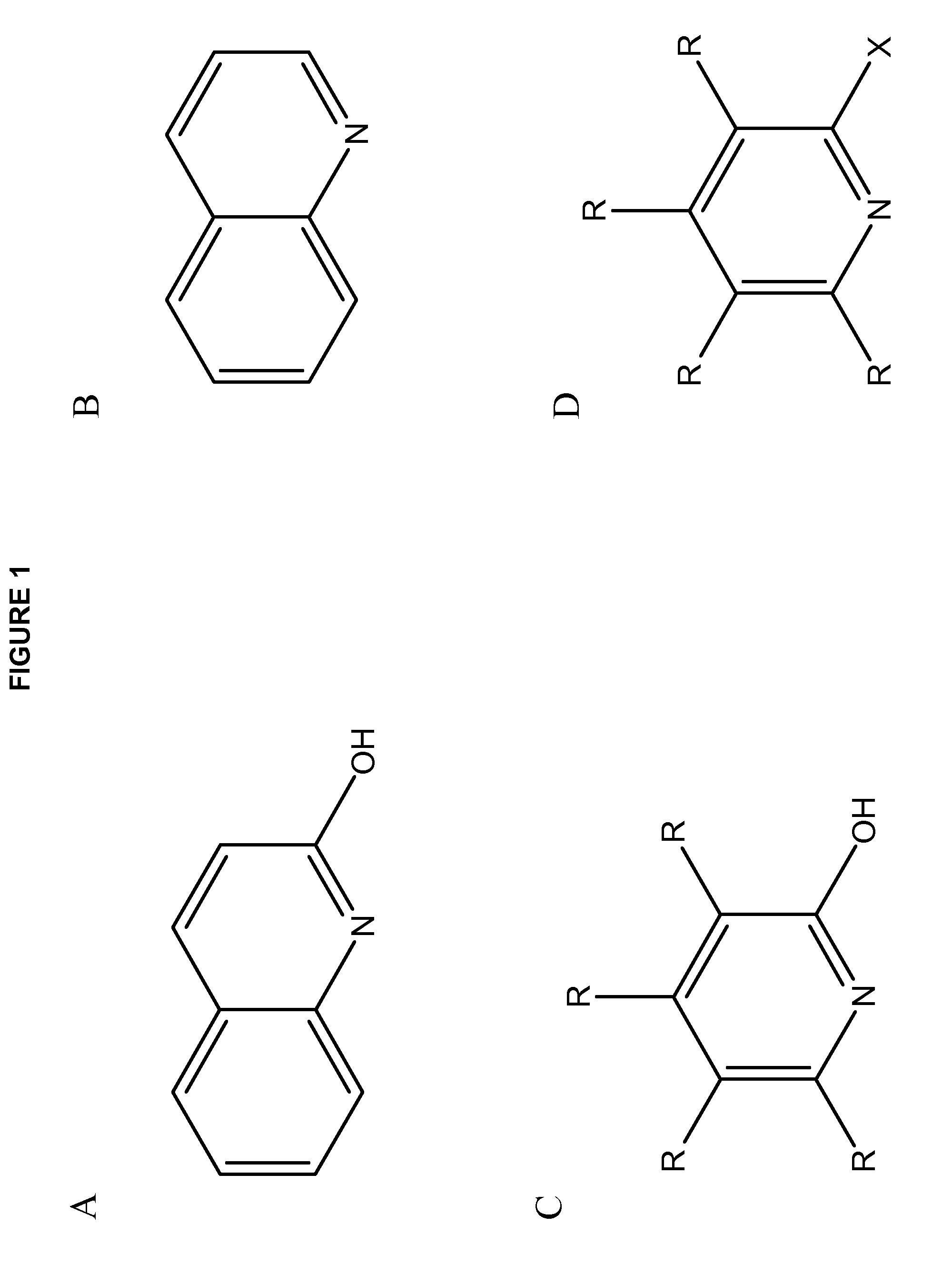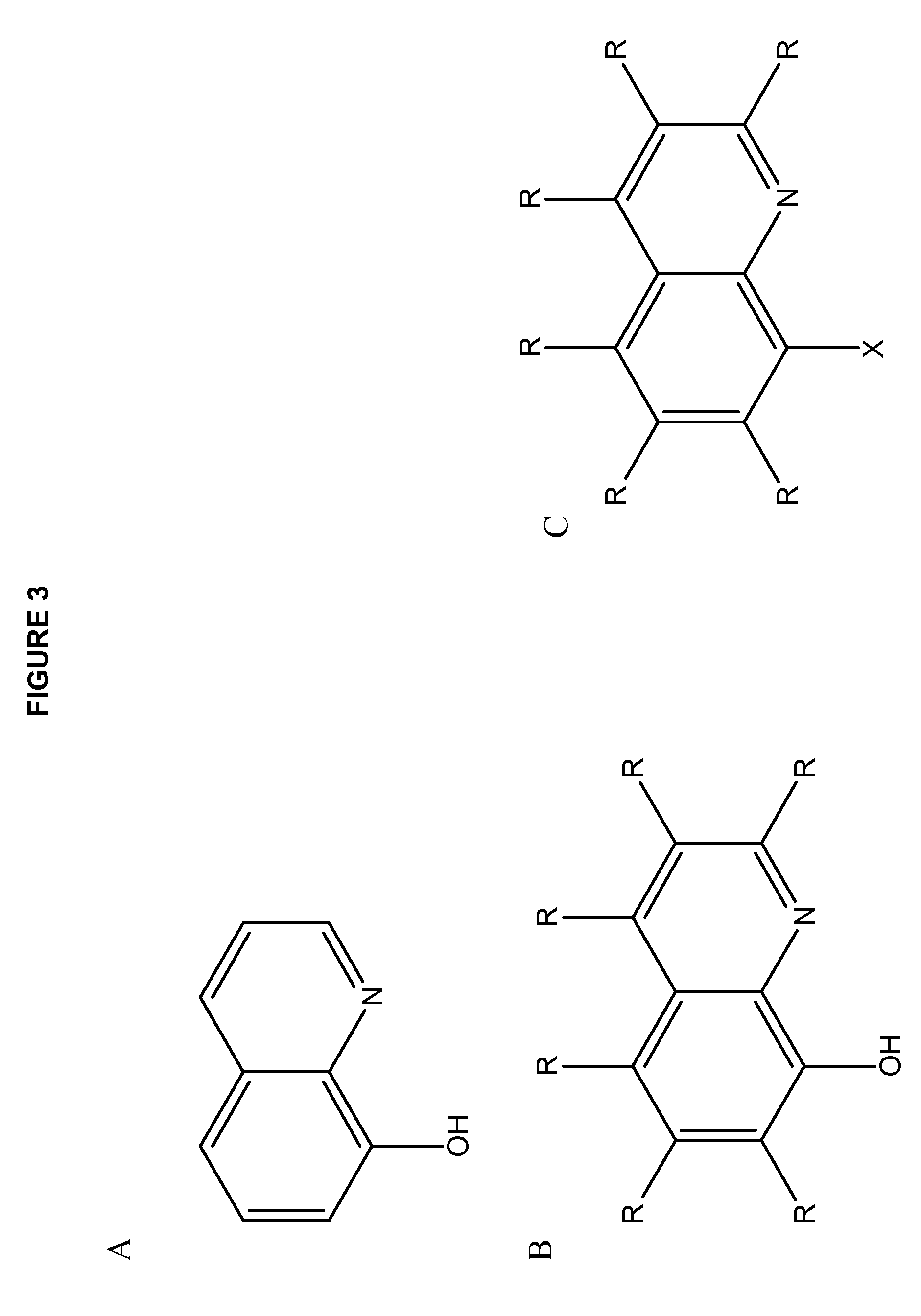Loading technique for preparing radionuclide containing nanoparticles
- Summary
- Abstract
- Description
- Claims
- Application Information
AI Technical Summary
Benefits of technology
Problems solved by technology
Method used
Image
Examples
Example
[0161]In one embodiment of the disclosed method for producing a nanoparticle composition loaded with a copper isotope, the described agent entrapping compound is a chelator (e.g. DOTA) and the molar ratio of ionophore to chelator is in the range of 1:1 to 1:10000000, for example 1:5, such as 1:10, for example 1:50, such as 1:100, for example 1:250, such as 1:500, for example 1:1000, such as 1:5000, for example 1:10000, such as 1:50000, for example 1:100000, such as 1:500000, for example 1:1000000, such as 1:5000000, for example 1:10000000.
[0162]In one embodiment of the disclosed method for producing a nanoparticle composition loaded with a radionuclide, wherein the ionophore described in formula A is used for loading, the described agent entrapping component is a chelator (e.g. DOTA) and the molar ratio of ionophore to chelator is in the range of 1:1 to 1:10000000, for example 1:5, such as 1:10, for example 1:50, such as 1:100, for example 1:250, such as 1:500, for example 1:1000, s...
Example
Examples I
[0271]The following examples illustrate a novel method for preparation of a liposome composition with entrapped radionuclides useful in delivering a radio-diagnostic and / or radio-therapeutic agent via the blood circulation to the target site, for example, a cancer tissue, or another pathological condition associated with leaky blood vessels, where the specificity and intensity of radioactivity signal localized in the target site are enhanced. The examples are in no way intended to limit the scope of the present invention. The radionuclide, 64Cu, is used as a model nuclide representing the chemical properties of all copper isotopes.
[0272]Isothermal titration calorimetry (ITC) measurements are designed to obtain primarily the enthalpy of each complex formation and their stoichiometries. The heats of each reaction are determined by integration of the peaks observed. After the contribution from the heat of dilution of each injection is subtracted, the heat is plotted against t...
Example
Examples II
[0289]The following additional examples further illustrate embodiments of the invention. The examples are in no way intended to limit the scope of the present invention and the radionuclide, 64Cu, remains the model nuclide representing the chemical properties of all copper isotopes.
[0290]Isothermal titration calorimetry (ITC) measurements were used to obtain the equilibrium constant (K, also referred to as the exchange constant) of the ligand exchange between the ionophore and the agent-entrapping compound, here a chelator. The ligand exchange of carbostyril (2-hydroxyquinoline, 2HQ) with DOTA when complexed to Cu(II) was investigated by titrating a buffered solution of Cu(2HQ)2 with DOTA. The ligand exchange was monitored by the heat of reaction from each injection in the ITC experiment (FIG. 9A) as determined by peak integration. The ligand exchange constant (K) was determined by fitting the heat of reaction shown in FIG. 9B. The binding isotherm is defined by the equil...
PUM
| Property | Measurement | Unit |
|---|---|---|
| Pressure | aaaaa | aaaaa |
| Pressure | aaaaa | aaaaa |
| Volume | aaaaa | aaaaa |
Abstract
Description
Claims
Application Information
 Login to View More
Login to View More - R&D
- Intellectual Property
- Life Sciences
- Materials
- Tech Scout
- Unparalleled Data Quality
- Higher Quality Content
- 60% Fewer Hallucinations
Browse by: Latest US Patents, China's latest patents, Technical Efficacy Thesaurus, Application Domain, Technology Topic, Popular Technical Reports.
© 2025 PatSnap. All rights reserved.Legal|Privacy policy|Modern Slavery Act Transparency Statement|Sitemap|About US| Contact US: help@patsnap.com



